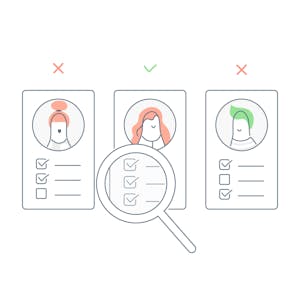- 7 minute read
- Pay-Per-Click
- Reputation Management
- SEO
Intermediate
Join hundreds of other operators and REGISTER NOW for Spark 2024 New Orleans October 13-15th!

Creating a winning PPC strategy takes a lot of planning and data to ensure you’re targeting the right audiences with impactful messaging. While narrowing down your target audience can seem daunting at first, you can actually use your existing customer data as a starting point. You get a lot of useful data from your customers when they book a tour or opt in to your newsletter, like their name, email, and phone number. Using Google Ads’ Customer Match, you can leverage this data to ensure you’re targeting the right kinds of customers with your ads.
Customer Match is a tool that allows you to use your existing customer data to reach and re-engage with existing customers with ads across the Google Network, including Search, the Shopping tab, Gmail, YouTube, and Display. This makes it easy to target your existing customers with Google Ads and even create similar audiences to find new potential customers for your business!
This guide explains how to use Customer Match to optimize your Google Ads. If you’re just getting started with PPC ads, check out our introductory video guide and our checklist to create your first ad.
In the simplest terms, Customer Match works by cross-referencing your customer data with Google’s user data to find your existing customers on Google’s platforms.
The first step is to create a customer list on Google Ads, uploading a CSV file with the data your customers have shared with you, such as their first name, last name, email address, and phone number. (Read Google’s help page on the topic for instructions on how to do this.) Google will find any Google users on this list by matching their email address or phone number. Next, you can target this customer list with your new or existing Google ads. When these customers are signed into their Google accounts, they will see your ads in Search, on Gmail, and beyond.
When it comes to sharing customer data, you might be concerned about privacy. However, you can rest assured that Google keeps this data secure by using a process called “hashing.” Essentially, they encrypt the data, and once they’ve matched it with Google accounts, the data is deleted. If you prefer, you can hash the data yourself, but if you’re not familiar with the process, it’s best to allow Google Ads to do it for you when you upload your customer file.
Once you’ve created your customer list, you can use and segment it in a variety of ways to optimize your ads. For example, you can:

Customer Match comes in handy for your remarketing efforts, making it easy to target those customers who have already interacted with your brand before. But it’s also useful in helping you reach new, qualified audiences through the Similar Audiences feature. This feature uses your existing customer data to find other users who have similar search behavior (for example, they’re searching for similar keywords related to your services).
Rather than casting a wide net targeting people who are searching for broad terms related to your business, Similar Audiences helps you narrow it down to customers who are highly likely to book your services. Google automatically updates your Similar Audiences list as your original customer list evolves, making it easy for you to ensure you’re always targeting qualified leads without doing any extra work.
To get the most out of Customer Match, you need to ensure that your data is up to date and you’re maximizing your opportunities. Here are some tips to help you keep your lists optimized.
We know you want to make every marketing dollar count, so if you’re planning on allocating some of your budget to Google Ads, make sure you’re giving yourself the best chance at success by taking advantage of tools like Customer Match. In a crowded advertising market, you can get a leg up when you’re targeting customers with tailored ads that they’re likely to be interested in.